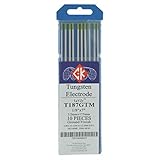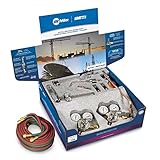Miller 295274 LPR-100 Gen II Respirator Review & Guide
Note for Readers: This post may contain affiliate links. If you purchase through them, we may earn a small commission at no cost to you. Thank you for supporting our site.
—
Introduction
The Miller 295274 LPR-100 Gen II Respirator is a next-generation low-profile respirator designed specifically for welding and metal fabrication environments. Built for professionals who need superior respiratory protection without sacrificing comfort, visibility, or mobility, this advanced PPE (personal protective equipment) is ideal for high-particulate operations such as grinding, cutting, plasma arc cutting (PAC), GMAW (MIG), GTAW (TIG), FCAW (flux-cored), and SMAW (stick welding).
This respirator is commonly used by:
– Professional welders
– Fabrication technicians
– Welding instructors and students
– Industrial maintenance crews
– Engineers and inspectors working on active job sites
Whether you’re welding galvanized steel or cutting aluminum, the LPR-100 Gen II offers a critical level of respiratory protection against harmful metal fumes and airborne particulates.
—
Types / Variants / Models
While the Miller LPR-100 series has multiple models, the 295274 Gen II version is an upgraded design that builds upon the success of the original LPR-100 respirator. Here’s how the Gen II compares to earlier versions:
– LPR-100 Gen I: Original model with basic comfort and protection features; widely used for general welding applications.
– LPR-100 Gen II (295274):
– Redesigned headgear and improved face seal for better comfort and fit
– Adjustable straps with quick-release buckles
– Integrated adjustable exhaust valves for better breathability
– Optional HEPA filter compatibility
The 295274 Gen II version delivers improved ergonomics and safety specs that make it more suitable for long-term wear in high-use industrial environments.
—
Key Features or Specifications
The Miller 295274 LPR-100 Gen II Respirator is built to meet rigorous workplace demands. Below are key features and what they mean for welders:
– Low-Profile Design:
– Fits under most welding helmets, including Miller Digital Infinity and Digital Elite series.
– Great for tight workspaces and precise fabrication jobs.
– Two-Stage Filtration System:
– P100/HEPA filters capture ≥99.97% of airborne particulates.
– Protects against metal fumes from mild steel, stainless, aluminum, and galvanized metals.
– Replaceable Filters:
– Easy twist-on design promotes hygienic filter changes.
– Compatible with P100 filters specific to Miller (sold separately).
– Superior Seal Design:
– Medical-grade silicone face seal minimizes leakage, remains soft and conformable during extended wear.
– Durable Construction:
– Built from impact- and heat-resistant materials for rugged environments.
– Certifications:
– NIOSH Certified P100 – verified filtration and safety system compliant with U.S. occupational safety standards.
Specs Overview:
– Weight: ~7.5 oz
– Compatibility: Most major welding helmet brands (especially Miller)
– Size Options: One size fits most (adjustable strap system)
– ASIN: B0DKLYQRL4
—
Usage & Compatibility
The LPR-100 Gen II is exceptionally versatile across welding processes. Here’s how and where it fits in:
– SMAW (Stick Welding): Great for outdoor or shielded applications where heavy particle exposure is likely.
– GMAW (MIG) and FCAW (Flux-Cored): Ideal when welding galvanized or painted steel where zinc oxide fumes are a hazard.
– GTAW (TIG): Low-profile allows unimpeded head movement and close-up focus, making it suitable for precision TIG work.
– Plasma Cutting & Grinding: Combines with face shields or auto-darkening helmets to maintain respiratory protection without bulk.
Compatibility Notes:
– Fits under most Miller helmets, including the Digital Infinity, T94i, and Titanium 9400i.
– Compatible with grinding shields and face protection systems.
– Not designed for use with supplied air or powered air-purifying respirator (PAPR) systems.
Pros:
– Excellent fit and comfort for long shifts.
– Easy filter replacement and maintenance.
– Superior low-profile ergonomics.
Cons:
– Filters must be purchased separately.
– Not for use in oxygen-deficient or IDLH environments.
—
Common Applications
The Miller 295274 LPR-100 Gen II shines in metalworking sectors where clean breathing air is critical:
– Heavy Fabrication & Structural Welding:
– Protects against thick fume concentrations in shipbuilding, steel bridges, and structural metalwork.
– Vehicle & Equipment Repair:
– Ideal for tasks involving rusted or painted metal surfaces that emit chemical fumes or particulates.
– Industrial Maintenance:
– Great for routine welding or grinding during plant turnarounds or refinery shutdowns.
– Welding Schools and Training Shops:
– Lightweight and student-friendly, the Gen II is popular in welding education for extended learning environments.
—
Tips & Best Practices
To get the most from your Miller LPR-100 Gen II:
– Fit Check Before Each Use:
– Ensure a snug seal around the nose and cheeks; perform a positive/negative pressure test.
– Change Filters Regularly:
– Replace filters after 40 hours of use or sooner if breathing becomes difficult. Don’t wait for visible signs of clogging.
– Clean After Each Day:
– Wipe the inner seal and shell with a damp cloth.
– Avoid harsh chemicals that can degrade the silicone.
– Helmet Compatibility:
– Test fit with your welding helmet before field use. Make sure the face seal doesn’t interfere with the helmet’s down position.
– Storage:
– Keep in a sealed plastic bag or respirator case between uses to prevent dirt and dust accumulation.
Avoid These Common Mistakes:
– Using damaged or expired filters.
– Wearing over facial hair, which can break the seal.
– Failing to flush exhaust valves if breath condensation builds up.
—
Conclusion
The Miller 295274 LPR-100 Gen II Respirator is a top-tier choice for welders, metalworkers, and fabrication professionals who need compact, comfortable, and effective respiratory protection. Its improved Gen II fit, certified filtration, and low-profile design make it ideal for daily use in high-fume applications—without compromising helmet compatibility or range of motion.
Whether you’re laying down MIG welds on mild steel or TIG-ing stainless pipe in a tight corner, this respirator helps you breathe easier and stay compliant with workplace safety guidelines.
If you’re serious about protecting your lungs on the job, the LPR-100 Gen II is an investment in both safety and comfort.
—
- Enhanced Protection with Nuisance OV Relief Filters: The Miller LPR-100 Gen. II Half Mask Respirator, Nuisance OV Relief M/L includes an added carbon layer feature to reduce nuisance-level organic vapor odors; Our respirator mask with filters helps ensure clean, breathable air for welders working in fume-intensive environments
- Up to 99.97% Filtration: Upgrade your welding gear with our respirator mask; Strongly resistant to oil, the filters of our respirators help provide reliable filtration of airborne particles, including solid dust, metal fumes and mists
- Compact Low-Profile Design for Welding Helmets: The slim design of our welding respirator under helmet offers a wide field of vision and fits easily under most welding helmets; Our respirator is designed to help provide full compatibility with your protective eyewear and headgear
- Ergonomic Half-Mask Respirator for Extended Comfort: Crafted for long welding shifts, our half face respirator features minimal dead air space to reduce heat buildup; It also comes with a large non-return exhaust valve to help minimize user fatigue during high-demand tasks
- Durable, Medical-Grade Materials: Made with latex- and silicone-free materials, this half mask face respirator is odor-free, hypoallergenic; It is also built to withstand demanding welding environments while providing user comfort and safety
Last update on 2025-10-18 / Affiliate links / Images from Amazon Product Advertising API
**Check the latest price and read (Incomplete: max_output_tokens)










